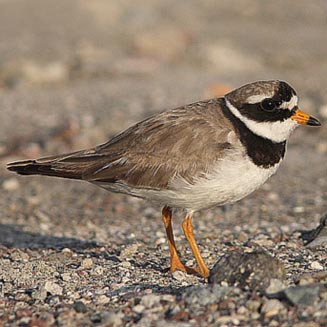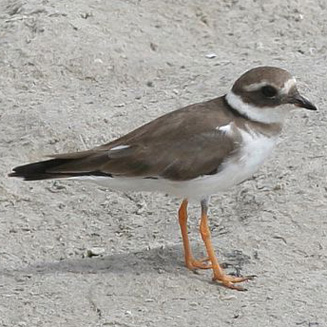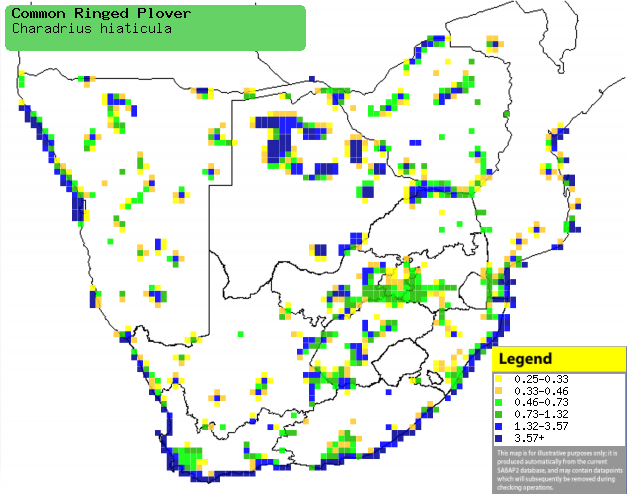|
Charadrius hiaticula (Common
ringed plover, Ringed plover)
Ringnekstrandkiewiet [Afrikaans]; Unokrekre [Xhosa];
Bontbekplevier [Dutch]; Pluvier grand-gravelot [French]; Sandregenpfeifer
[German]; Borrelho-grande-de-coleira [Portuguese]
Life
> Eukaryotes >
Opisthokonta
> Metazoa (animals) >
Bilateria >
Deuterostomia > Chordata >
Craniata > Vertebrata (vertebrates) > Gnathostomata (jawed
vertebrates) > Teleostomi (teleost fish) > Osteichthyes (bony fish) > Class:
Sarcopterygii (lobe-finned
fish) > Stegocephalia (terrestrial
vertebrates) > Tetrapoda
(four-legged vertebrates) > Reptiliomorpha > Amniota >
Reptilia (reptiles) >
Romeriida > Diapsida > Archosauromorpha > Archosauria >
Dinosauria
(dinosaurs) > Saurischia > Theropoda (bipedal predatory dinosaurs) >
Coelurosauria > Maniraptora > Aves
(birds) >
Order: Charadriiformes > Family: Charadriidae
> Genus: Charadrius
 |
 |
|
Common ringed plover in breeding plumage, Sweden.
[photo
Kristian Svensson
©] |
Common ringed plover in non-breeding plumage,
Lambert's Bay, South Africa. [photo Trevor Hardaker ©] |
Distribution and habitat
Breeds in the circumpolar region, mainly above 60° North
but largely excluding Alaska and north-western Canada, heading south in the
non-breeding season to the Arabian Peninsula, Iran and sub-Saharan Africa. In
southern Africa it is common along the coast, as well as in northern and
south-eastern Botswana, southern Mozambique and patches of Namibia and central
South Africa. It generally prefers estuaries and lagoons on
the coastline, while inland it favours mud and sand banks along the shore of
rivers and wetlands, sewage works and salt pans.
|
 |
|
Distribution of Common ringed plover in southern Africa,
based on statistical smoothing of the records from first SA Bird Atlas
Project (©
Animal Demography unit, University of
Cape Town; smoothing by Birgit Erni and Francesca Little). Colours range
from dark blue (most common) through to yellow (least common).
See here for the latest distribution
from the SABAP2. |
Movements and migrations
Palearctic breeding migrant, travelling the
great distance from its northern breeding grounds, through the East
African coast to southern Africa. Here it arrives in the period from
September-November, eventually leaving from late February-April.
Food
It mainly eats aquatic invertebrates, foraging by day and
night using the technique typical of plovers, repeatedly running, stopping then
searching for prey to pluck from the ground or water surface. The following food items have been recorded
in its diet:
- Invertebrates
- marine polychaetes
- crustaceans
- molluscs
- amphipods
- isopods
- insects and their larvae
-
spiders
- Small fishes
Threats
Not threatened, although its southern African population is
thought to have decreased in size since the late 1900s, probably caused by
the degradation of wetlands.
References
-
Hockey PAR, Dean WRJ and Ryan PG 2005. Roberts
- Birds of southern Africa, VIIth ed. The Trustees of the John Voelcker
Bird Book Fund, Cape Town.
|
